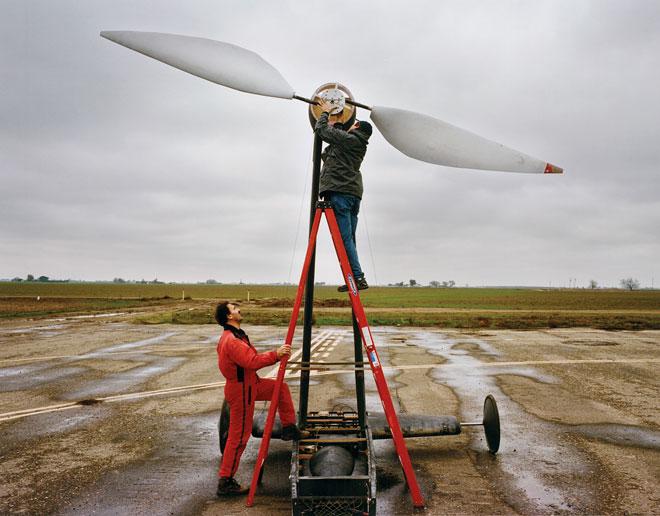
Rick Cavallaro, a Georgia Tech CoE graduate, has set out to create a dirt sailing device to, while sailing downwind, go faster than the wind that is propelling it. During the last week of March, the North American Land Sailing Association’s annual dirt-boat championships, the America’s Cup, will take place. The tactics of dirt sailing and water sailing are the same; the maneuvers are the same. The main difference, as people who race on dirt are keen to point out, is speed. Sailing on a dry lake is about three times faster than sailing on water.
Richard Jenkins, the current America’s Cup champion, says there’s no doubt that a boat (dirt or otherwise) can go faster than the wind. By running at an angle to take advantage of crosswind effects, a boat can outpace wind speed. In a best-case scenario, however, a sailing vessel headed directly downwind will move at the speed of the breeze that’s pushing it.
Cavallaro claims that his device – Blackbird – can break this barrier. Not only that, he says, it will likely go downwind twice as fast as the wind. The boast is made all the more outlandish by the fact that Blackbird doesn’t have anything that looks even remotely like a sail.
The craft is a crude contraption of plywood, carbon fiber, bicycle parts, and pieces of go-cart. It’s low and relatively streamlined, except for the 14-foot-high tower mounted behind the cockpit. Attached to this is what can be called—for the sake of argument—Blackbird’s sail. Many will choose to call it a giant propeller, because it has two diametrically opposed 8-foot-long blades that rotate just like, well, a giant propeller. But propellers imply motors. Blackbird’s rotating propeller-shaped sail is the motor. Cavallaro has connected the prop to wheels via a drivetrain, so the faster the cart rolls, the faster the sail-prop spins, thereby creating a feedback loop that Cavallaro claims will accelerate the cart from a standstill through the zero-wind barrier and beyond.
Cavallaro did the “impossible” with Blackbird. Richard Jenkins, who, after watching the official record-setting runs, was compelled to blog about Blackbird. “It works,” he wrote. “It starts from rest, trundles to true wind speed, then powers to a multiple of about three times the true wind speed.”
Cavallaro’s victory tour took him to Science Foo Camp 2010, an invite-only conference hosted each summer at the GoogleplexHe. Cavallaro has estimated that installing his new technology on a cargo ship would save 7 to 10 percent of its fuel cost—or about $100,000—per Pacific crossing.
